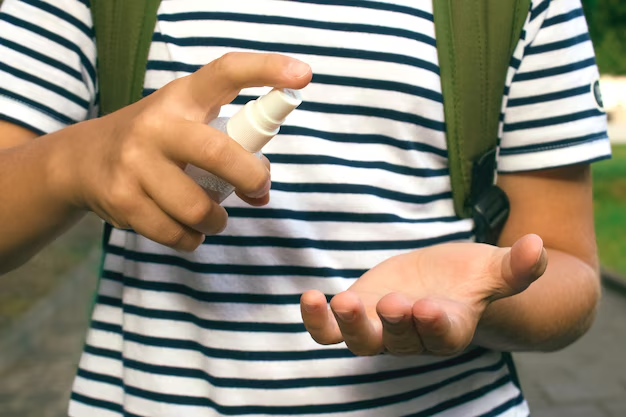Understanding Malaria: What You Need to Know
Imagine relaxing in the warm air of the tropics, surrounded by lush vegetation and vibrant cultures. This idyllic setting, however, often comes with a hidden risk—malaria, a disease that has impacted millions globally. But what exactly is malaria, and how does it affect those in regions where it's prevalent? This article delves into every angle of this complex disease, offering you a comprehensive understanding.
The Basics of Malaria
Malaria is a disease caused by a parasite that spreads to humans through the bites of infected Anopheles mosquitoes. The disease is recognized by symptoms such as fever, chills, and flu-like illness. Without prompt treatment, malaria can lead to severe health complications and even death.
How Malaria Spreads
Malaria transmission occurs mainly through mosquito bites, although in rare cases, it can be transmitted through blood transfusions, organ transplants, or from mother to child during birth. The mosquitoes that carry malaria thrive in warm, humid climates, making tropical and subtropical regions the hardest hit.
Key Regions Affected:
- Sub-Saharan Africa
- South and Southeast Asia
- Parts of Central and South America
- Some Pacific Islands
The Lifecycle of the Malaria Parasite
To understand malaria's impact, it's essential to grasp its lifecycle, which involves both human and mosquito hosts.
Infection and Replication
Mosquito Bite: When an infected mosquito bites a person, it injects malaria parasites, called sporozoites, into their bloodstream.
Liver Phase: The sporozoites travel to the liver within 30 minutes and mature into schizonts, which burst and release thousands of merozoites.
Blood Phase: Merozoites enter red blood cells, where they multiply rapidly and cause the cells to burst. This cycle results in the characteristic symptoms of malaria.
Transmission: Some parasites develop into sexual forms, called gametocytes, which circulate in the bloodstream. Another mosquito can ingest these gametocytes during a subsequent bite, continuing the cycle.
Malaria Symptoms and Diagnosis
Common Symptoms
Malaria symptoms usually appear 10–15 days after the infectious mosquito bite. Common symptoms include:
- High fever and sweating
- Chills and body aches
- Headache and nausea
- Fatigue
In severe cases, it can cause life-threatening complications such as anemia, mental confusion, and multi-organ dysfunction.
Diagnostic Techniques
Diagnosing malaria involves detecting the parasite in the blood. Various methods include:
- Microscopy: The staining of blood smears, widely used for its accuracy.
- Rapid Diagnostic Tests (RDTs): These detect malaria antigens and offer a quick and convenient alternative.
- Polymerase Chain Reaction (PCR): More precise, but often confined to research settings due to its complexity and cost.
Malaria Prevention and Control
Preventing malaria is crucial, especially in high-risk areas where the disease is endemic. Understanding and employing protective measures can significantly reduce the risk.
Personal Protection Strategies
- Insect Repellents: Use of DEET-based repellents on exposed skin.
- Mosquito Nets: Sleeping under insecticide-treated nets is effective in reducing mosquito bites at night.
- Prophylactic Medications: Travelers to endemic regions may receive antimalarial tablets as a preventive step.
Community and Environmental Efforts
- Vector Control: Using insecticide-treated bed nets and indoor residual spraying to kill mosquitoes.
- Eliminating Breeding Sites: Draining stagnant water and using larvicides to prevent mosquito population growth.
The Impact and Challenges in Fighting Malaria
Despite advances in prevention and treatment, malaria remains a significant health problem due to several challenges:
Resistance Issues
- Drug Resistance: Some malaria parasites have developed resistance to common antimalarial drugs, complicating treatment efforts.
- Insecticide Resistance: Mosquito resistance to insecticides used in mosquito nets and sprays poses another challenge.
Societal and Economic Effects
- Impact on Health Systems: High malaria burdens can overwhelm health facilities, impeding responses to other diseases.
- Economic Costs: Malaria affects productivity, with sick individuals unable to work, leading to economic loss.
Malaria Research and Future Trends
Vaccination Efforts
Recent years have seen the introduction of vaccines aimed at preventing malaria. The RTS,S vaccine, endorsed by the World Health Organization, represents a potential breakthrough in reducing malaria cases among children in Africa.
Advanced Technologies
- Gene Editing: Techniques like CRISPR are being explored to modify mosquito genes to reduce population or transmission capabilities.
- New Drug Development: Research continues into new compounds to overcome drug resistance.
Practical Steps for Minimizing Risk
Consult local health authorities and international health organizations for updated information if you live in or plan to travel to high-risk areas. Awareness and preparedness are your best defenses.
- Educate yourself on the symptoms and seek medical attention if you suspect infection.
- Support local and global efforts aimed at malaria eradication, from volunteering to participating in awareness campaigns.
Conclusion
Understanding malaria's life cycle, symptoms, and prevention is essential not just for those directly affected but for the broader global community. While challenges remain, advancements in science and community health strategies provide hope for a future where malaria is no longer a major public health threat. Taking proactive measures and supporting global initiatives are crucial steps toward eradicating this ancient disease.
Summary in Bullet Points
- Understanding Malaria 🌍: Malaria is a parasitic disease spread through mosquito bites, affecting millions worldwide, especially in tropical areas.
- Symptoms to Watch ⚠️: High fever, chills, headaches, and fatigue are common indicators.
- Prevention Techniques 🛡️: Use insect repellents, sleep under nets, and take prophylactic meds if traveling.
- Challenges Faced 🚧: Drug and insecticide resistance complicates eradication efforts.
- Innovations and Hope 💡: Vaccines like RTS,S and gene-editing technologies offer promising solutions.
- Practical Tips 🎯: Stay informed, seek prompt medical care if needed, and support eradication initiatives.
